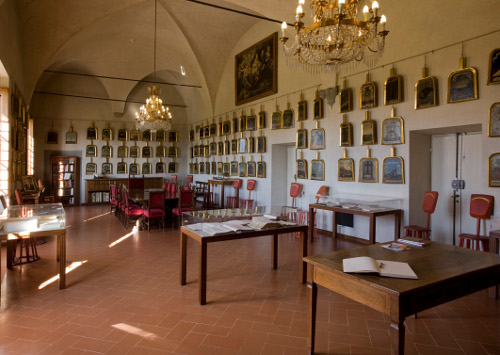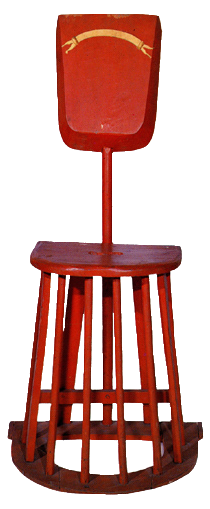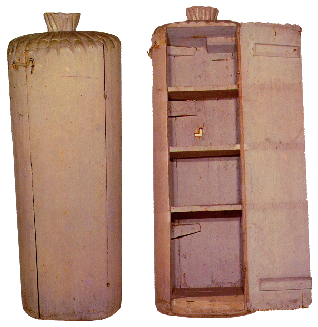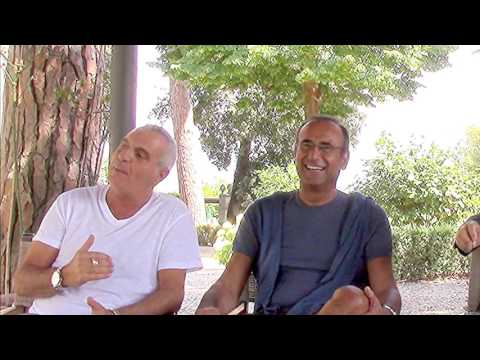The Sala delle Pale

The Sala delle Pale (picture by George Tatge, Regione Toscana)
The symbology of the Accademia is based on the idea that "good" language is like the flour that is separated from the bran. This image finds its immediate reference point in the activity of the lexicographers whose goal was to propose a model of language cleaned of the impurities of its usage, but it is also apparent in the adoption of objects and furnishings closely linked with the cultivation of wheat, its grinding and making into bread.


2 sacchi (i.e. sacks), which are lockers shaped as sacks, with a door and shelves inside to preserve the "flour", i.e. the statutes, regulations and other writings approved by the academic censors.
The hall takes its name from the 153 ancient shovels that are preserved here, personal emblems of the sixteenth and seventeeth-century members of the Accademia. In another hall you can see the pale belonging to some of the contemporary Academicians, which testify to the desire to keep this ancient tradition alive.
The complete and detailed catalogue of the pale was edited by Roberto Paolo Ciardi and Lucia Tongiorgi Tomasi (Le pale di Crusca. Cultura e simbologia, Accademia della Crusca, Firenze, 1983) and can be purchased at the Edizioni di Crusca. Another volume dedicated to the pale is the anastatic reproduction of the manuscript no.125 of the Library of the Accademia, Raccolta d'imprese degli Accademici della Crusca (edited by Domenico De Martino, with a foreword by Nicoletta Maraschio, Biblion Edizioni, Milano-Venezia 2010) also available for purchase online. It is possible to search the images and descriptions of the pale at this page or at this Facebook gallery.
Notices by Crusca
-
Speaker's corner
La competenza linguistica dei giovani italiani: cosa c'è al di là dei numeri?, by Rosario Coluccia.
Activities
-
The Piazza aims at the preservation and at carrying out activities for the promotion of multilingualism in the European Union; 2007-ongoing.
-
Digital integrated archive of didactic materials, iconographic and multimedia texts and documentation for the divulgation of Italian linguistic and historical-cultural heritage, with special regard to the second and third generation Italians abroad; project FIRB; 2009-2013.
-
Creation of Il Vocabolario del fiorentino contemporaneo (Dictionary of Contemporary Florentine Language): project financed by Regione Toscana and Comune di Firenze (first three-year period) and by Federico del Vecchio Bank - Banca Etruria group (second three-year period); 1994-1996/2011-2013.













